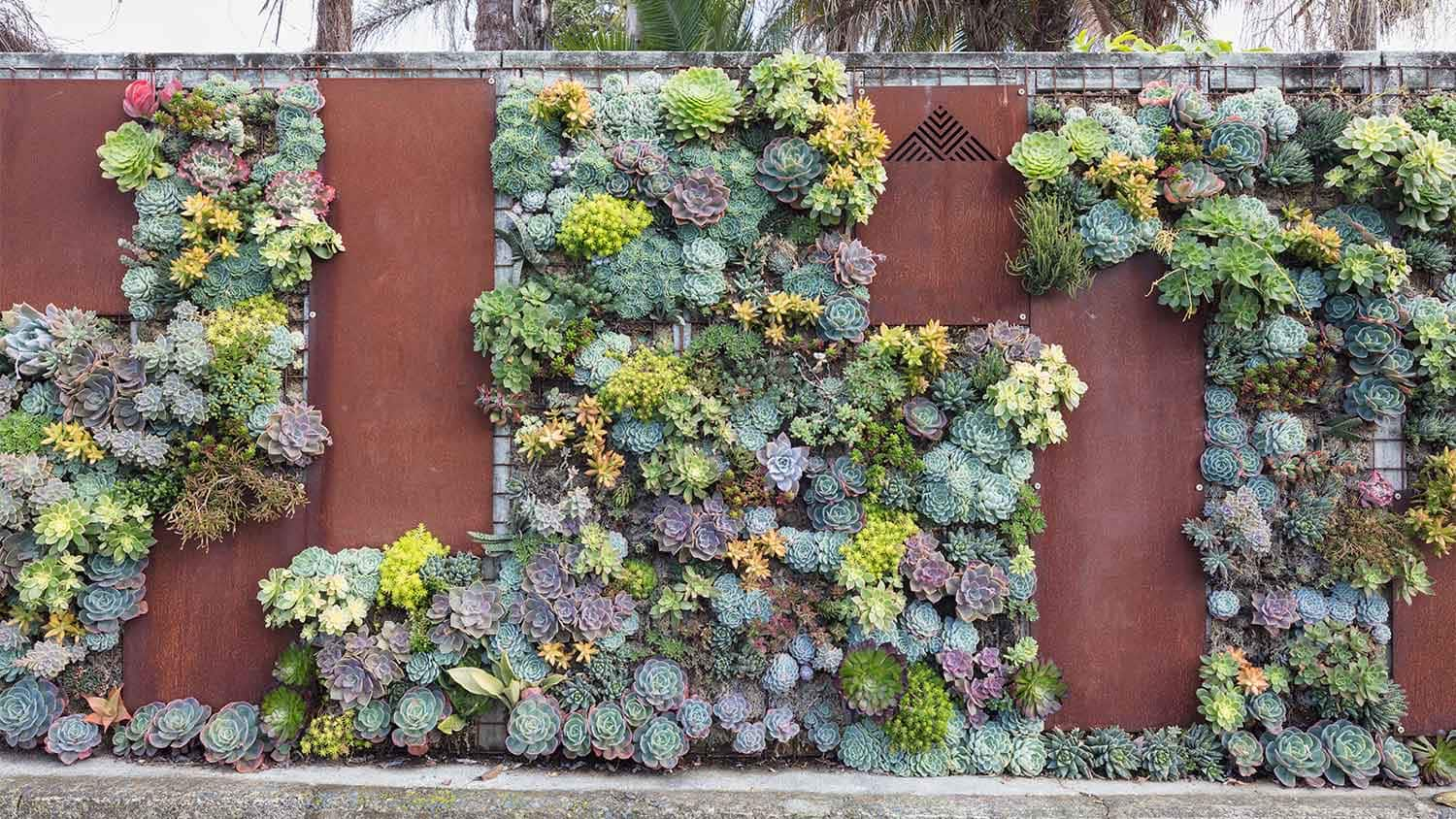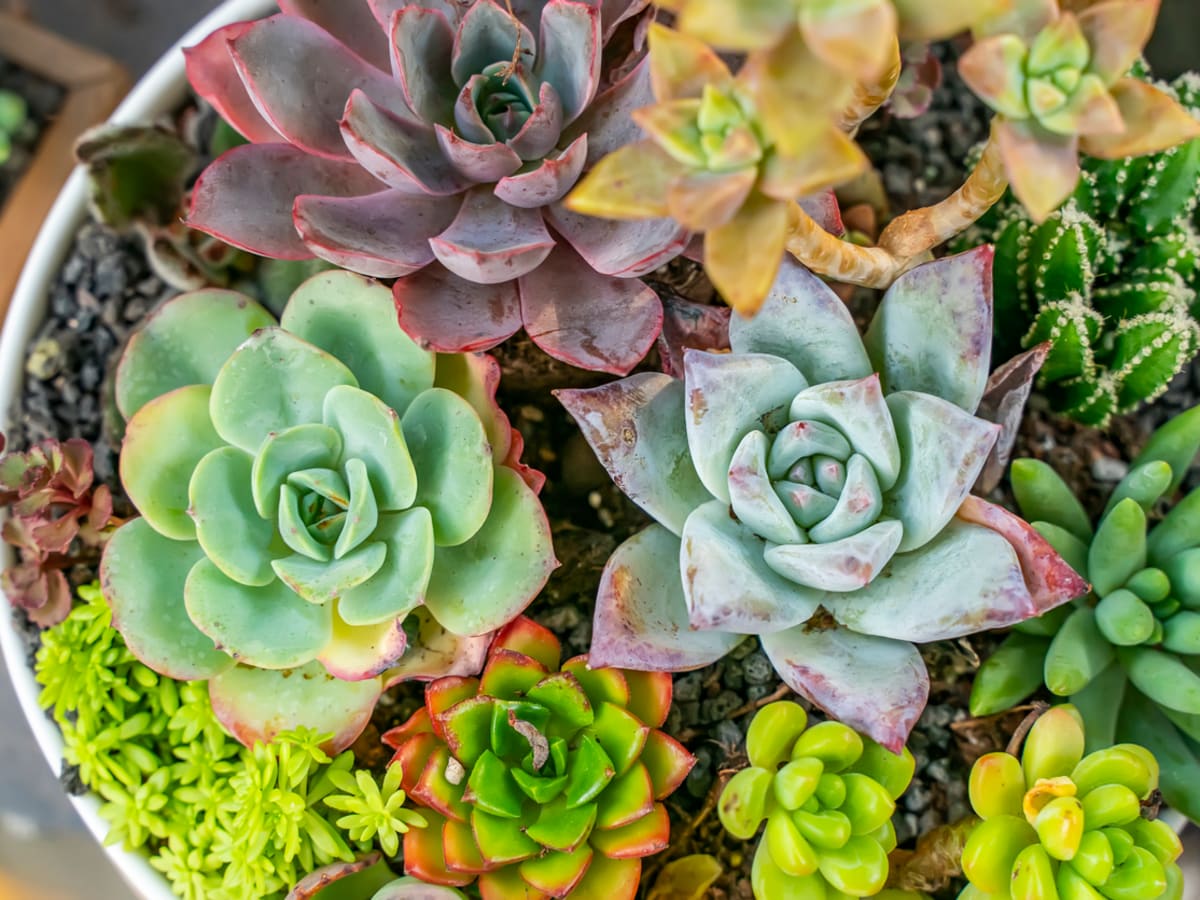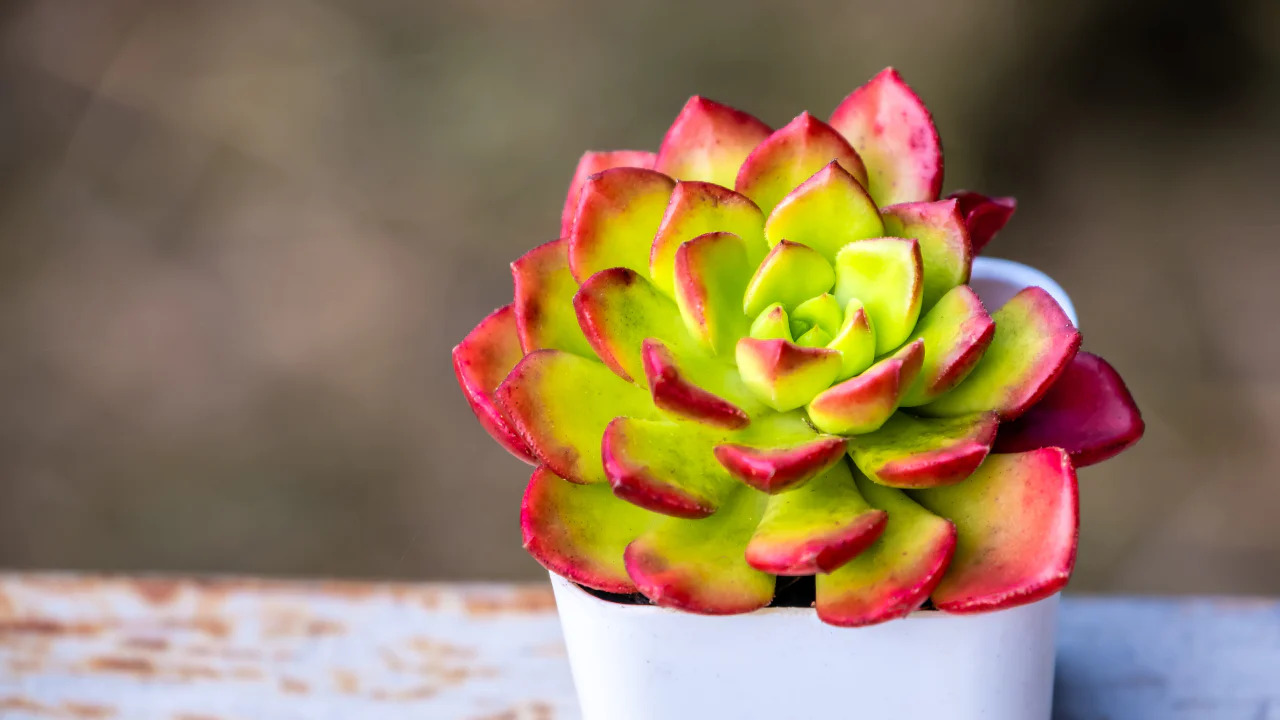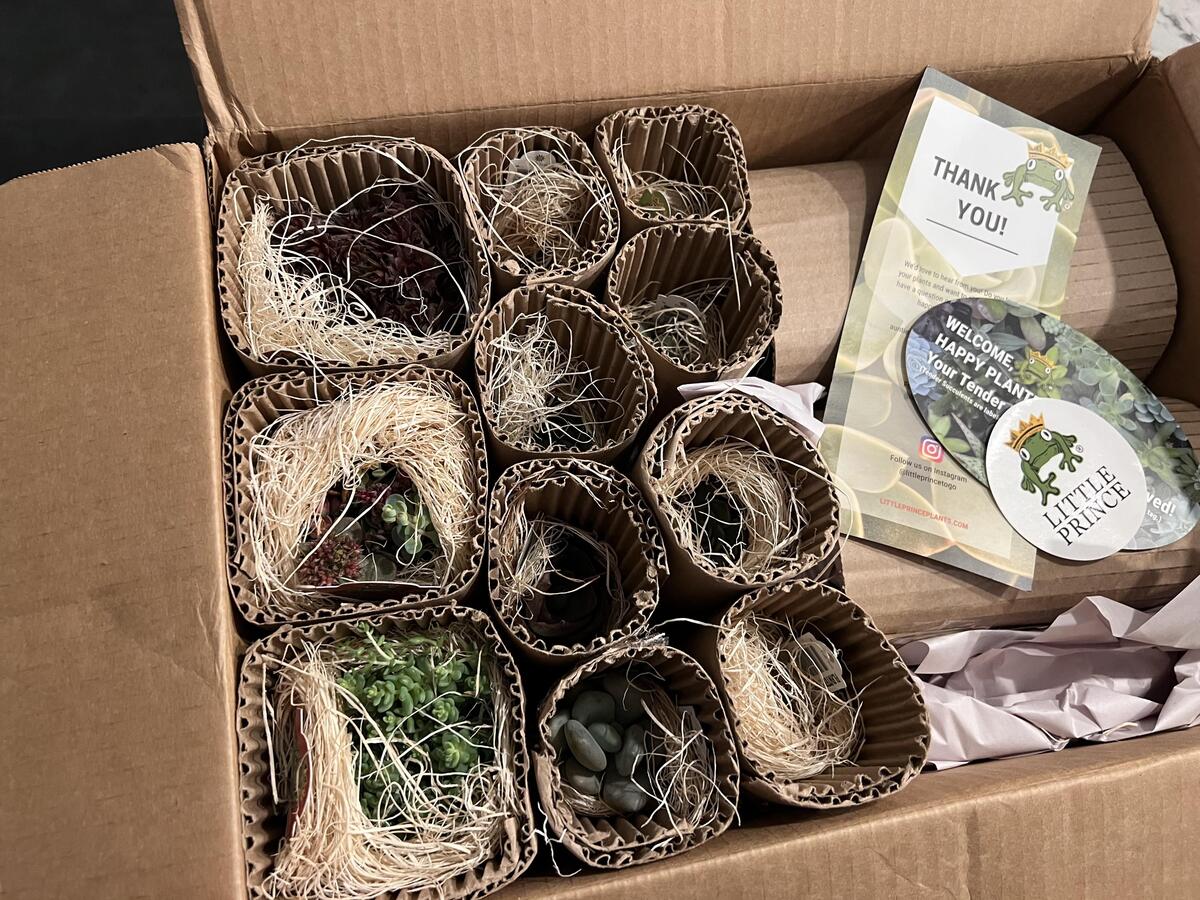Home>Gardening Techniques>DIY Projects>How To Hang Succulents On A Wall


DIY Projects
How To Hang Succulents On A Wall
Published: December 28, 2023
Learn how to create stunning hanging succulent displays on your walls with these easy DIY projects. Transform your space with greenery!
(Many of the links in this article redirect to a specific reviewed product. Your purchase of these products through affiliate links helps to generate commission for Chicagolandgardening.com, at no extra cost. Learn more)
Table of Contents
- Introduction
- Choosing the Right Succulents for Hanging
- Selecting the Perfect Wall Display
- Preparing the Wall
- Building and Mounting Hanging Planters
- Hanging Succulents on a Wire Grid
- Creating a Vertical Succulent Garden
- Maintaining and Caring for Wall-Mounted Succulents
- Troubleshooting Common Issues
- Conclusion
Introduction
Welcome to the world of DIY projects! If you’re someone who loves to get your hands dirty and create beautiful, unique pieces for your home, then you’ve come to the right place. In this article, we’ll be exploring the fascinating world of hanging succulents on a wall.
Succulents are a popular choice for indoor plants due to their low-maintenance nature and ability to thrive in various environments. They come in a wide range of shapes, sizes, and colors, making them a versatile and visually appealing option for home decor.
However, instead of keeping your succulents in pots on a shelf or table, why not elevate their beauty by hanging them on a wall? This innovative approach not only adds a unique touch to your living space but also maximizes the use of vertical space.
In this article, we will guide you through the process of choosing the right succulents for hanging, selecting the perfect wall display, preparing the wall for mounting, building and mounting hanging planters, creating a vertical succulent garden, and maintaining and caring for your wall-mounted succulents. We will also discuss common troubleshooting issues that you may encounter along the way.
Whether you’re a seasoned gardener or just starting your DIY journey, we’re confident that this article will provide you with all the information you need to create a stunning wall of hanging succulents. So, let’s dive in and explore the world of DIY succulent projects!
Choosing the Right Succulents for Hanging
When it comes to choosing succulents for hanging, there are a few factors to consider. First and foremost, you’ll want to select varieties that are well-suited to indoor environments and can tolerate low-light conditions. Some popular options include String of Pearls, Burro’s Tail, and String of Hearts.
It’s also essential to choose succulents with trailing or cascading growth habits. These types of succulents will naturally flow down, creating a beautiful vertical display on your wall. Look for plants with long stems and delicate leaves that will elegantly drape downwards.
Another crucial consideration is the size of the succulents. Opt for smaller varieties that won’t overwhelm your wall or hanging display. It’s also worth noting that succulents with lighter weight foliage are generally easier to mount and will be less likely to cause strain on your wall or hanging system.
When selecting succulents for hanging, take into account their water needs. Most succulents have adapted to dry environments and have a low water requirement. However, some varieties may require more frequent watering than others. If you choose succulents that have similar watering needs, it will be easier to maintain a watering schedule and ensure the overall health of your plants.
Lastly, don’t be afraid to mix and match different succulent varieties to create a visually appealing and diverse wall display. Combining succulents with different shapes, colors, and textures will add depth and interest to your hanging garden. Just be mindful of the care requirements of each plant and group together those with similar needs.
By considering these factors and choosing the right succulents for hanging, you can ensure a stunning and thriving display on your wall. Now, let’s move on to the next step: selecting the perfect wall display for your succulents.
Selecting the Perfect Wall Display
Now that you’ve chosen the perfect succulents for hanging, it’s time to decide on the right wall display for your plants. The type of display you choose will depend on your personal style, available space, and the number of succulents you want to showcase.
One popular option is a wall-mounted vertical planter. These planters are specifically designed to hang on the wall and can accommodate multiple succulents in individual pockets or compartments. Vertical planters come in various materials, such as metal, wood, or plastic, allowing you to choose one that complements your decor.
If you prefer a more creative and artistic approach, consider utilizing a wire grid or mesh panel. These grids can be attached to the wall and act as a framework for hanging succulents. You can secure the plants in place with metal clips or small pots and arrange them in a way that suits your aesthetic preferences.
For a more minimalist and modern look, floating shelves can be an excellent option. These shelves create the illusion of succulents floating on the wall and provide a clean and streamlined display. You can arrange your succulents on the shelves in an organized or random manner, depending on your desired aesthetic.
When selecting a wall display, it’s essential to consider the weight-bearing capacity of your chosen option. Succulents and their containers can become quite heavy, especially when watered, so ensure that the display is sturdy enough to support the weight without any risk of falling or damage to your wall.
Additionally, think about the location of the wall display. Succulents thrive in bright, indirect sunlight, so choose a wall that receives enough natural light throughout the day. Avoid placing the display near direct sunlight, as it may cause damage to the plants.
By selecting the perfect wall display, you can enhance the aesthetic appeal of your succulents and create a focal point in your space. Next, we’ll explain how to prepare the wall for mounting to ensure the stability and longevity of your hanging succulents.
Preparing the Wall
Before you start mounting your wall display for hanging succulents, it’s important to properly prepare the wall to ensure stability and longevity. Here are the steps to follow:
- Clean the wall: Begin by cleaning the wall surface where you plan to mount your display. Remove any dirt, dust, or debris using a damp cloth or sponge. This will ensure proper adhesion of the mounting materials.
- Locate the studs: Use a stud finder or tap on the wall to locate the studs. Mounting your display on studs will provide the best support and stability. Mark the locations of the studs with a pencil or painter’s tape.
- Prep the mounting surface: If you’re using a vertical planter or wire grid, you may need to attach mounting brackets or hooks. Follow the manufacturer’s instructions for proper installation. If you’re using floating shelves, ensure that the brackets are securely attached to the wall and aligned with the studs.
- Consider wall protection: To prevent any potential damage to your wall, you can place a clear, adhesive-backed protective pad or a small piece of felt behind the mounting brackets or hooks. This will create a cushioning effect and avoid scratches or marks on the wall.
- Plan the arrangement: Before mounting, plan the arrangement of your succulents on the wall display. Consider the spacing between plants, their growth habits, and overall aesthetics. You can create a mock-up by arranging the plants on the floor or a table to get a visual representation of how it will look on the wall.
By properly preparing the wall, you’ll ensure a secure and stable foundation for your hanging succulents. In the next section, we’ll discuss how to build and mount hanging planters for your succulents.
Building and Mounting Hanging Planters
Building and mounting hanging planters is a fun and creative way to display your succulents on the wall. Here is a step-by-step guide to help you get started:
- Choose your planter: Select a hanging planter that suits your style and complements the overall aesthetic of your space. You can find a wide variety of hanging planters in different materials, shapes, and sizes.
- Prepare the planter: If your planter doesn’t have drainage holes, drill a few holes in the bottom to ensure proper water drainage. This will help prevent overwatering and ensure the health of your succulents.
- Select the mounting method: Determine the mounting method based on the type of planter and your wall surface. For lightweight planters, adhesive hooks or wall-mounted hooks can be sufficient. For heavier planters, consider using wall anchors or screws for additional support.
- Measure and mark: Using a measuring tape and level, measure and mark the desired location for your planter on the wall. Ensure that the marks align with the mounting holes or hooks on the planter.
- Mount the planter: Follow the manufacturer’s instructions for mounting the planter. If using adhesive hooks, clean the wall surface with rubbing alcohol before applying the adhesive. Press firmly to ensure proper adhesion. If using screws or wall anchors, drill pilot holes and secure the mounting hardware according to the marked locations.
- Hang the planter: Carefully hang the planter on the mounted hooks or hardware. Ensure that it is securely in place and level. Take a step back to check the positioning and adjust if necessary.
By following these steps, you can build and mount hanging planters for your succulents, creating a striking visual display on your wall. In the next section, we’ll discuss an alternative method for hanging succulents using a wire grid.
Hanging Succulents on a Wire Grid
If you’re looking for a more artistic and customizable approach to hanging your succulents, using a wire grid is a fantastic option. Here’s a step-by-step guide on how to hang succulents on a wire grid:
- Choose a wire grid: Select a wire grid that fits your desired size and shape. You can find wire grids at craft stores or online retailers. Opt for a grid with smaller-sized openings to prevent succulent pots from slipping through.
- Mount the grid: Attach the wire grid to your wall using screws or wall anchors. Be sure to align the grid with the studs in the wall for added stability and weight-bearing support.
- Plan your design: Determine the arrangement of your succulents on the wire grid before mounting them. Consider factors like plant size, growth habit, and color to create a visually appealing arrangement.
- Secure the succulents: Use metal clips, clamp-style plant hangers, or small pots to secure the succulents to the wire grid. Position the clips around the base of each plant or use small pots with drainage holes for a more traditional planting approach.
- Hang the wire grid: Lift the wire grid and carefully hang it on the mounted hooks or hardware. Make sure that the grid is securely in place and level. Adjust the positioning of the succulents as needed.
- Water and care: When watering your succulents, be mindful of how the water flows through the wire grid. Ensure that excess water is drained properly to prevent any damage to the wall. Follow the specific care instructions for your succulent varieties to keep them healthy and thriving.
By following these steps, you can create a visually stunning and customizable vertical garden using a wire grid. In the next section, we’ll explore how to create a vertical succulent garden for a more elaborate and striking display.
Creating a Vertical Succulent Garden
If you’re looking to make a bold statement with your hanging succulents, creating a vertical succulent garden is the way to go. This method allows you to arrange multiple succulents in a visually striking and artistic manner. Here’s how you can create your own vertical succulent garden:
- Choose a frame: Select a sturdy frame that will serve as the foundation for your vertical garden. You can use a wooden frame, metal grid, or repurpose an old picture frame. Ensure that the frame is large enough to accommodate multiple succulents.
- Prepare the frame: If using a wooden frame, treat it with a sealant or weatherproofing agent to protect it from moisture. If using a metal grid, ensure that it’s clean and free of any rust or sharp edges that could potentially harm the succulents.
- Attach a backing: Attach a backing material, such as landscape fabric or chicken wire, to the frame. This will provide support for the succulents and prevent soil from falling out. Secure the backing tightly to ensure it remains in place.
- Add a planting medium: Fill the frame with a well-draining succulent potting mix. Make sure the soil is evenly distributed and level throughout the frame. Avoid overcompacting the soil to maintain proper aeration and drainage for the succulents.
- Plant the succulents: Carefully remove the succulents from their pots and gently loosen the roots. Create small holes in the planting medium and place each succulent in its designated spot. Ensure that the roots are covered in soil and the plants are secure.
- Allow for growth: Space the succulents apart to allow room for growth and prevent overcrowding. As the succulents mature, they will fill in the gaps, creating a lush and vibrant vertical garden display.
- Hang the vertical garden: Once your succulents are planted, hang the vertical garden on a sturdy wall using hooks or wall anchors. Make sure the frame is securely mounted, as the weight of the soil and plants can be substantial.
By following these steps, you can create a captivating vertical succulent garden that will be a centerpiece in any space. In the next sections, we’ll discuss how to properly maintain and care for your wall-mounted succulent display and address some common troubleshooting issues.
Maintaining and Caring for Wall-Mounted Succulents
Once you’ve successfully created your wall-mounted succulent display, it’s important to maintain proper care to ensure the health and longevity of your plants. Here are some essential tips for maintaining and caring for your wall-mounted succulents:
- Watering: Succulents have low water requirements and are prone to root rot if overwatered. Water your wall-mounted succulents sparingly, allowing the soil to dry out between waterings. Avoid getting water directly on the wall, especially if it’s sensitive to moisture.
- Lighting: Most succulents thrive in bright, indirect sunlight. Ensure that your wall-mounted display receives adequate light throughout the day. If your succulents start to stretch or become pale, it may be a sign of insufficient light, and you may need to consider using artificial grow lights.
- Pruning and Propagation: Regularly trim and prune your succulents to maintain their shape and control their growth. You can propagate new succulents from cuttings by allowing the cut ends to callous over and then planting them in well-draining soil.
- Fertilizing: While succulents don’t require frequent fertilization, you can provide a diluted succulent-specific fertilizer during their active growing season. Follow the instructions on the fertilizer package to avoid overfertilizing, which can cause damage to the plants.
- Pest Control: Keep an eye out for common succulent pests such as mealybugs and spider mites. If you notice any signs of infestation, isolate affected plants and use an appropriate organic insecticidal soap or neem oil to control the pests.
- Maintain Stability: Regularly check the stability of your wall-mounted succulent display. Ensure that the mounting hooks or hardware are secure, and there is no excessive weight that could strain the wall or cause the display to become unbalanced.
By following these maintenance and care tips, your wall-mounted succulents will thrive and continue to enhance your space with their beauty. However, it’s essential to be aware of common issues that may arise. In the next section, we’ll address some troubleshooting tips for common problems you may encounter.
Troubleshooting Common Issues
While wall-mounted succulents are generally low-maintenance, there are a few common issues that you may encounter. Here are some troubleshooting tips to help you address these problems:
- Yellowing leaves: Yellowing leaves can indicate overwatering or inadequate sunlight. Adjust your watering schedule, ensuring the soil is allowed to dry out between waterings. If necessary, provide more indirect sunlight to promote healthy growth.
- Leggy growth: Leggy growth occurs when succulents stretch towards the light. This is a sign of inadequate lighting. Move your wall-mounted succulents to a location with brighter, indirect light, or consider using artificial grow lights to supplement their sunlight needs.
- Root rot: Root rot can occur if succulents are overwatered, leading to mushy roots and plant decline. If you notice root rot, remove the affected succulent from the display, trim away the rotten roots, and replant it in fresh, well-draining soil.
- Pest infestation: If you notice signs of pests such as mealybugs or spider mites, isolate affected plants and treat them with organic insecticidal soap or neem oil. Regularly inspect your succulents for any signs of infestation and take swift action to prevent the spread.
- Uneven growth: If you observe uneven growth or one succulent overshadowing others, try rotating the display periodically to ensure all plants receive equal sunlight exposure. You can also trim or prune the overgrown succulent to encourage more balanced growth.
- Soil drying out too quickly: If the soil in your succulent display dries out too quickly, it may be due to a lack of organic matter or moisture retention. Consider adding a small amount of well-decomposed compost or coconut coir to the potting mix to improve water retention.
By addressing these common issues promptly and taking appropriate action, you can ensure the health and vitality of your wall-mounted succulents. With proper care and troubleshooting, your succulent display will continue to add beauty and charm to your home or office space.
Now that you’ve mastered the art of hanging succulents on a wall, you can sit back, relax, and enjoy the beauty of your vertical garden. Get creative with your arrangements, experiment with different succulent varieties, and watch as your wall comes to life with vibrant greenery.
Conclusion
Congratulations on completing your journey into the world of hanging succulents on a wall! By choosing the right succulents, selecting the perfect wall display, preparing the wall, building and mounting hanging planters, or utilizing a wire grid, you’ve created a stunning vertical garden that adds a unique touch to your living space.
Remember to maintain and care for your wall-mounted succulents by providing the right amount of water, sufficient light, and occasional pruning. Address common issues such as yellowing leaves, leggy growth, pests, and uneven growth promptly to ensure the overall health and longevity of your succulent display.
Now, it’s time to sit back and enjoy the beauty and tranquility that your wall-mounted succulents bring to your home or office. Share your creation with friends and family, and inspire others to embark on their own DIY succulent projects.
Whether you’re a seasoned gardener or just beginning your journey into the world of DIY, the possibilities are endless when it comes to incorporating succulents into your home decor. So go ahead, let your creativity flourish, and embrace the beauty of nature with your unique wall-mounted succulent display.
Thank you for joining us on this adventure into the world of hanging succulents on a wall. We hope you found this comprehensive guide helpful and that it inspires you to continue exploring the exciting realm of DIY projects.








